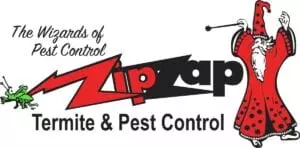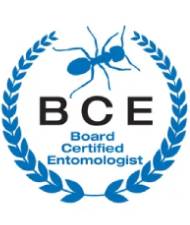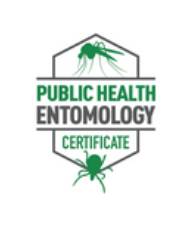How to Use Hedge Apples for Pest Control: Myth, Magic, or Misstep?

At ZipZap Termite & Pest Control, we’ve heard it all when it comes to DIY pest solutions—everything from peppermint oil to Irish Spring soap. But one remedy that keeps popping up, especially here in the Midwest, is the humble hedge apple. These bumpy, green fruits from the Osage orange tree have a reputation as a natural pest repellent, with folks swearing they keep spiders, roaches, and even mice at bay. So, how to use hedge apples for pest control—is it a game-changer or just folklore? As your friendly neighborhood pest pros, we’re diving into the truth behind hedge apples, sharing what works, what doesn’t, and why our professional services might still be your best bet. Buckle up for some juicy insights with a side of humor!
What Are Hedge Apples, Anyway?
Hedge apples, also called Osage oranges or hedge balls, are the fruit of the Maclura pomifera tree, native to places like Texas, Oklahoma, and Arkansas. Picture a grapefruit-sized, yellowish-green orb that looks like it got stuck in a blender but survived. They’re not edible—unless you’re a squirrel with a taste for bitter—and they’ve been used for centuries as natural fence lines due to the tree’s thorny, tough nature. Early settlers planted Osage orange trees to keep livestock in and predators out, and somewhere along the line, someone decided these funky fruits might scare off creepy crawlies, too.
The idea is that hedge apples give off a strong, citrusy scent and contain compounds that pests find as appealing as a tax audit. Folklore claims placing them around your home—near foundations, in basements, or by windows—keeps spiders, roaches, mice, and other pests from crashing your pad. But before you start decorating your house with these green grenades, let’s see what the science says.
Where Did the Hedge Apple Myth Start?
The hedge apple’s pest control fame is a classic case of folklore meeting wishful thinking, with roots stretching back to early American settlers. The Osage orange tree was named after the Osage Nation, who valued its wood for bows and its thorny branches for corralling livestock. By the mid-1800s, farmers across the Midwest planted these trees as “living fences” before barbed wire became a thing. Hedge apples, the tree’s fruit, littered the ground, and someone—probably a farmer tired of spiders in the barn—noticed fewer bugs around them. Cue the lightbulb moment: Maybe these fruits were nature’s bug spray?
This theory likely spread through oral tradition, as rural communities shared tips for keeping homes pest-free. By the early 20th century, hedge apples were a staple in Midwestern cellars and attics, touted as a cheap, natural way to fend off spiders and roaches. The myth gained traction because Osage oranges contain compounds like tetrahydroxystilbene, which lab studies later confirmed can repel certain insects in high concentrations. But here’s the catch: those early settlers weren’t running controlled experiments. If pests stayed away, they credited the hedge apples, not cleaner barns or colder winters.
Fast forward to the 1980s and 1990s, when natural remedies became trendy. Hedge apples got a modern makeover, with garden centers and some pest control enthusiasts marketing them as eco-friendly pest repellents. Despite little scientific backing, articles in homesteading magazines and word-of-mouth stories kept the myth alive. Today, you’ll find hedge apples sold at farmers’ markets or online, often with bold claims about banishing everything from ants to mice. At ZipZap, we love the nostalgia, but we’re here to separate fact from farmyard fable.
The Hedge Apple Hype: Does It Work?
Here’s where things get interesting. At ZipZap Termite & Pest Control, we love a good natural solution, but we also love facts. The buzz around hedge apples comes from studies, like one from Iowa State University, that found chemicals extracted from the fruit, specifically a compound called tetrahydroxystilbene, can repel certain insects like German cockroaches, mosquitoes, and houseflies when concentrated. Sliced hedge apples in small, enclosed spaces showed some repellent action, too. Sounds promising, right?
But hold the phone. The same research says to scatter whole hedge apples around your house or basement? Not so much. In open spaces, any repellent chemicals dissipate faster than your Wi-Fi signal during a storm. Plus, the compounds don’t faze all pests—spiders, millipedes, and centipedes might just shrug and keep spinning webs. And here’s a kicker: as hedge apples rot, they can attract fruit flies or other pests, turning your pest repellent into a pest party.
Anecdotally, some folks swear by hedge apples. You’ll hear stories of grandmothers tossing them in the cellar and never seeing a spider again. But as pest control pros, we know correlation isn’t causation—maybe those spiders just found a better Airbnb. The reality is, there’s no solid evidence that whole hedge apples are a reliable pest control method for your home.
How to Use Hedge Apples (If You’re Feeling Adventurous)
Okay, let’s say you’re curious and want to give hedge apples a whirl. Maybe you’ve got an Osage orange tree in your yard, or you snagged some at a local orchard. Here’s how to use hedge apples for pest control, with tips to avoid turning your home into a sticky, rotting mess:
- Pick or purchase carefully. Look for firm, green hedge apples in the fall when they’re in season. Wear gloves—the milky sap can irritate your skin, and nobody wants a rash while playing pest warrior.
- Place strategically. Put whole hedge apples in areas where you’ve seen pests, like near basement windows, crawl spaces, or entry points. Keep them about two feet from problem spots, and set them on tinfoil or in a dish to catch any leaky sap.
- Try slicing for faster results. Some sources suggest cutting the fruit in half or crushing it to release more of the repellent compounds. Place the pieces in a dish to avoid a gooey disaster, and target spots with high pest activity, like where you’ve spotted spiders.
- Replace regularly. Hedge apples last two to three months in cool areas, but once they turn brown and mushy, toss them out. Rotting fruit can attract pests, which is the opposite of what you’re going for.
- Keep pets and kids away. While hedge apples aren’t poisonous to humans, their bitter taste and sticky sap aren’t exactly pet-friendly. Plus, you don’t want your dog thinking it’s a new chew toy.
Pro tip: If you’re placing them outside, focus on your home’s foundation or near entry points. Inside, stick to enclosed spaces like closets or attics, but don’t expect miracles in open areas like your living room.
The Catch: Why Hedge Apples Aren’t a Pest Control Superhero
At ZipZap Termite & Pest Control, we’re all about eco-friendly options, but hedge apples have some serious limits. For starters, they’re not a one-size-fits-all fix. Spiders, for example, might not care—some even build webs on Osage orange trees, which is like pests giving hedge apples the middle finger. Mice? The scent might annoy them, but it’s not enough to evict a determined rodent. And don’t get us started on roaches—those critters laugh in the face of DIY remedies.
Then there’s the practicality issue. Hedge apples aren’t exactly easy to find unless you live near an Osage orange tree or a market that stocks them. They’re messy, need replacing, and can cause skin irritation if mishandled. Plus, if you’re banking on them to solve a full-blown infestation, you’re fighting a dragon with a butter knife.
The biggest issue? No residual effect. Unlike professional pest control treatments that keep working for weeks or months, hedge apples lose their mojo fast, especially in open spaces. At ZipZap, our products are designed to stick around, resisting rain and weather to keep pests out long-term. Hedge apples? They’re more like a one-hit wonder than a chart-topping album.
ZipZap’s Take: A Better Way to Zap Pests
Look, we get the appeal of hedge apples—they’re natural, cheap, and have that old-school charm. But if you’re serious about keeping your home pest-free, they’re more of a quirky sidekick than a superhero. Here’s what we recommend instead, straight from the ZipZap playbook:
- Sanitation is king. Sweep up crumbs, seal food in containers, and take out the trash regularly. A clean home is like a “no vacancy” sign for pests.
- Seal entry points. Caulk cracks, add weatherstripping to doors, and screen vents. If pests can’t get in, they can’t cause trouble.
- Trust the pros. Our bundled pest control programs at ZipZap Termite & Pest Control tackle everything from roaches to rodents with targeted treatments that last. We use professional, effective products and know exactly where pests hide, so you don’t have to play guessing games with fruit.
Our quarterly or monthly treatment plans are designed for Missouri and Kansas homes, where pests like German cockroaches and spiders love to overstay their welcome. Unlike hedge apples, our methods are backed by science, not folklore, and we tailor them to your home’s needs. Plus, we save you the hassle of chasing down fruit or cleaning up sticky sap.
Wrapping It Up: Hedge Apples or Bust?
So, how to use hedge apples for pest control? Grab some, place them strategically, maybe slice them up, and hope for the best—but don’t bet the farm on it. At ZipZap Termite & Pest Control, we think hedge apples are a fun experiment, like trying to teach your cat to fetch. They might repel a few bugs in small spaces, but for real pest protection, they’re no match for professional expertise. The science is clear: whole hedge apples don’t cut it in open areas, and their effect is spotty at best.
If you’re tired of playing pest roulette, give us a call. Our ZipZap Termite & Pest Control team will keep your home free of spiders, roaches, and mice without a single hedge apple in sight. Stick with us, and you’ll be saying “zip, zap, pests are gone!” faster than you can say “Osage orange.” Let’s keep your home pest-free the smart way—no myths required
Want to learn more about our Kansas City pest control plans? Contact ZipZap Termite & Pest Control today for a quote and say goodbye to pests for good!

Jeffery Preece, BCE, PHE
Jeffery Preece is the owner and technical director of ZipZap Termite & Pest Control.



